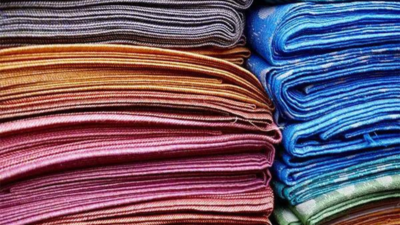Textiles exporters face fresh trade uncertainty amid Trump’s latest announcements

NEW DELHI: US President Donald Trump‘s latest tariff announcements have resulted in fresh uncertainty, with buyers expected to go slow on new orders.While textiles exporters seem to have got an advantage over Bangladesh, which has been slapped with 35% duty by Trump, industry is keeping close tabs on India’s bilateral trade deal with the US as the American president has claimed the agreement with Vietnam allows him to impose a 20% tariff, although there may be product-specific concessions.In any case, the final word is not out on where tariffs settle in the coming weeks, with countries, including Bangladesh, once again rushing to Washington to rebalance the equations.“We need to watch how tariffs move. Buyers are a little confused at the moment,” said V Elangovan, managing director of Tirupur-based SNQS International. What is adding to the complications is China. “Retailers have to fill their shelves. Last week, our merchandisers were in Shanghai, we could not compete because the Chinese were quoting better prices this year than last year. It is not clear how they can do so when the tariff for them is higher. We need more hand-holding from govt,” he added.Govt and industry has been pushing for zero duty for garments and home textiles, where Indian products are competitive, although it is unlikely even if a trade deal is worked out as the Trump administration has refused to remove the 10% baseline tariff applicable on all countries. At 10%, Indian exporters are seen to be better off than rivals, provided subsidies are not doled out to Chinese manufacturers.In natural garments, where India has traditional strength, the cost disadvantage is relatively small, 3-4%. However, in synthetic garments, the gap widens to 10-11% due to higher production costs, Apparel Export Promotion Council (AEPC) said.“India, even with the existing reciprocal tariff rate (26% announced in April), will gain in export competitiveness vis-a-vis major garment exporting competing countries. Besides, we are quite hopeful of India striking a favourable trade deal which will further improve the competitiveness of India’s apparel exports in all important US market… even a moderate reduction in the reciprocal tariff to around 15% could significantly improve our competitiveness across both natural and synthetic garment categories, thereby opening infinite export possibilities for India amid shifting global sourcing trends,” said AEPC CEO Mithileshwar Thakur.With current tariff levels – India at 26%, Vietnam at 20%, and Bangladesh at 35% – India is seen to be competitive against Bangladesh in natural garments but faces pressure in the synthetics segment. “It is looking good for us and a trade deal will help,” said K M Subramani, president of Tirupur Exporters’ Association.The big question is the ability of Indian garment makers to manufacture on a scale, especially given their reluctance to invest in capacity addition.





